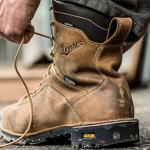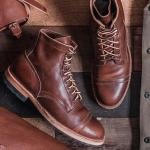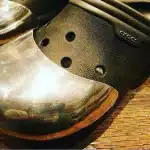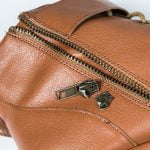Whatever type of labor you undertake, there is one essential piece of equipment on which you just cannot cut corners: your work boots. In the workplace, everything is possible because our settings are rarely predictable, so you want to have steel wrapped around your toes for protection in case something goes wrong.
Steel-toe boots are a must at many occupations, including construction, carpentry, and all in between. The added security ensures that you are protected from a wide range of typical workplace risks.
The discomfort of steel-toe boots is a common concern. Given that steel is a substantial, hard material, this assumption makes sense. There are several steel-toe boots available, but many of them are hard, sturdy, and uncomfortable.
It’s not a given that you’ll immediately feel comfortable wearing brand-new steel-toe work boots in your size. In order for the work boots to fit precisely, some parts need to be stretched. This is the reason your steel-toe work boots need to be broken in.
When work boots are broken in, they gradually mold to the shape of your foot to provide the best possible level of comfort.
The only drawback of this procedure is that it is very painful and leaves scars and blisters that take weeks to heal.
Fortunately for you, I’m going to provide you with tips and tricks for breaking in work boots fast and also the things you must avoid while breaking into your work boots!
1. GET THE RIGHT FIT
Work boots’ sizes are determined by much more than just a number. Some boots run small, while others run huge. Do your study on each brand and type of footwear before purchasing any that you want to wear for days at a time of labor.
Be certain to determine the width of your work boot. Regardless of whether your feet are broad or not, if you easily get overheated, allow more room in the toe.
To choose the ideal running shoes, just as runners must assess their gaits, those looking for new work boots must consider how much arch support they will want. More heel support is required for feet that are flatter.
Select carefully. Even when your pair of incredibly unbreakable shoes is actually merely the wrong size, you can start to believe that you are doomed to work in misery for the rest of your days with them.
2. Break-in Work Shoes With Steel Toes
Use Boot Stretcher Spray
Many people think that using a boot stretching spray to break in leather work boots is the most effective method since it softens the tough leather and makes it easier for it to conform to the wearer’s feet.
Use a boot stretcher spray to coat your steel toe work boot; this will facilitate the stretching process. After applying enough solution to the exterior and interior of your steel boots, move on to the following step.
Before using the boot stretcher spray, make sure your work boots are completely dry and clean for the greatest results.
After a few minutes, the leather ought to be sufficiently smooth to make breaking in the boots much simpler.
Use The Boot Stretcher
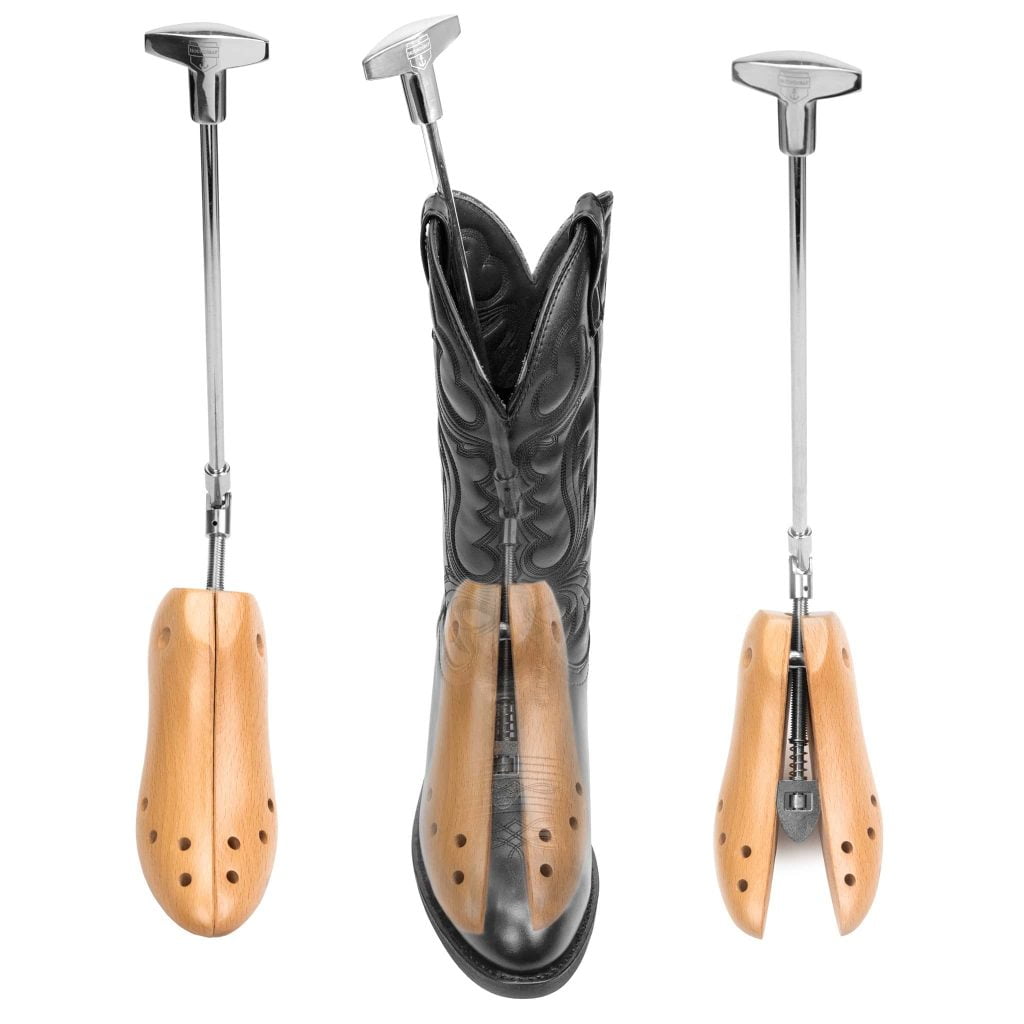
When your new work boots are completely closed, you should insert a boot stretcher, a mechanical device made of wood and metal. The stretcher features a metal handle that may be rotated counterclockwise to widen it to the required width. The stretcher’s goal is to gradually mould the leather fibres into the desired width.
Put the boot stretcher into your steel-toe work boots with care, then stretch it to its maximum length. Lock it and leave them for a minimum of eight hours or overnight.
If you leave them for several hours, steel-toe boots will quickly break in. Remove the boot stretcher gradually and try the steel-toe boots on to make sure they fit.
Wear your work/thick socks
It’s very important to wear thick socks when breaking into steel-toe boots. Good work socks are thicker and have an extra heel pad, which allows you to extend the interior at any angle.
Wearing a pair of work socks is crucial while trying on your steel boots so you can accurately gauge how well they fit. It is absolutely up to you what kind of socks you wear as long as they are cosy.
Stretching the material of the shoes will be aided by the soft cushion of thicker socks. It is an excellent method for effectively breaking in your work boots without damaging your toes.
3. Bend the Boot, Step on the Heel
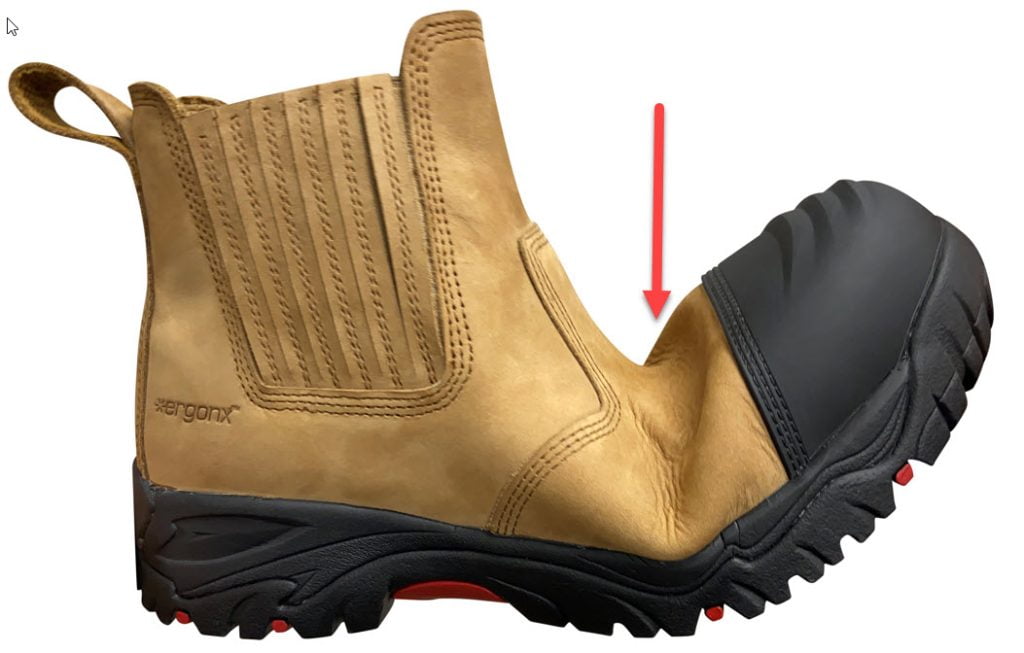
With your hands, gently bend the boot’s midsole in both directions.
Stepping on the boot’s heels will also loosen up any stiff spots. Some people advise doing the same thing. However, I advise wearing a soft flip-flop or indoor moccasin.
4. Walk Around the House
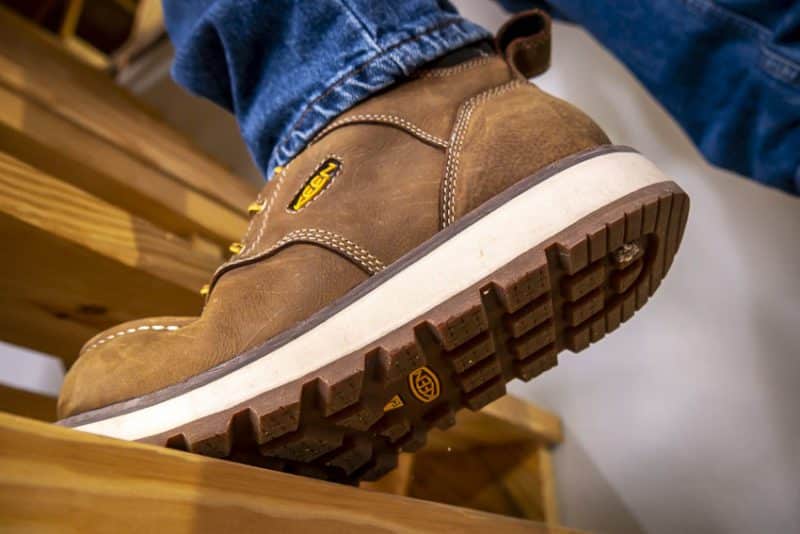
One by one put your feet inside your steel-toed work boots. Given that they are your boot size and have only recently been stretched using the boot stretcher, putting them on shouldn’t be a problem.
Start by donning your new boots for a few hours each day while you are at home. If you don’t have much time during the workday, give it about 15-20 minutes before and after, and then wear the boots around the house all weekend.
While inside, shift your feet around and make a few minor placement modifications. Let your feet explore and become accustomed to the interior of your boots. Put your foot on the midsole and rock it back and forth along the edge of a stair step. I always have good results when I break in new riding boots this way.
Verify if you’re uncomfortable.
If you experience any discomfort or pain while wearing your new work boots, be aware of it. When breaking in a work boot, pay particular attention to the area that hurts or feels uncomfortable.
NOTE: If the discomfort is intolerable, remove the boots and give your situation some thought. You may need to acquire a different pair of boots or a different size. You should be extremely careful when selecting a pair of steel-toe boots because not all companies have the same sizes.
5. Walk Around Outside
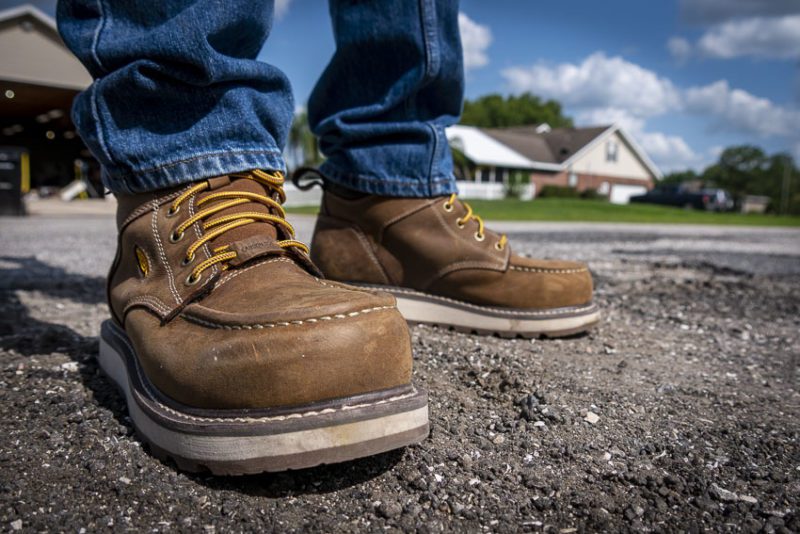
Avoid venturing too far from home, but if you have patio stairs, an apartment walk-up, a rear garden, or a front yard, break in your boots on each of the varied textures and hardnesses of the surfaces.
Use the sidewalk in front of your home as a stepping stone for exercise. I also advise using the stair step midsole rocking technique on the elevation in the sidewalk instead.
However, start most of the trespassing inside. Once you’ve worn your boots outside, you cannot return them.
6. Use a Blow Dryer
You can try stretching the material with a blow dryer to soften any tough, stiff spots on your work boots. To avoid damaging the material, be sure to use it with caution.
As it just uses heat to soften the leather fibers in your work boots, it’s ideal for people who don’t want to put any strain on their pricey leather work boots.
The next steps are easy:
- Make sure your work boots are dust-free and clean.
- Warm your new leather work boots from all angles using your heat drier.
- Doing this should loosen the leather fibers after about two minutes.
- Put on your work boots and take a stroll for about an hour.
- Up until the boots are broken in, repeat the process as necessary.
7. Apply leather conditioner or Mink Oil
Use a leather conditioner to supple the fibers of the shoes, paying specific attention to the spots you found to cause pain or discomfort. While the leather is breaking in, applying a leather conditioner will aid in stretching certain areas.
It’s one of the greatest methods for breaking in work boots because it expedites the process and revitalizes and preserves the leather, increasing its lifespan and enhancing its appearance.
Work boot breaking in is a breeze with the use of a leather conditioner. Here’s how it works:
- To get rid of any last bits of dirt, brush the boots.
- Use a wet towel and a leather cleaner solution to clean the boots.
- Apply a generous amount of leather conditioner, and then let it sit for about an hour to replenish the fibres of the leather.
- Put on the boots and walk around in them for another hour to let the leather take the contour of your feet.
- Wipe away the leather conditioner with a fresh cloth after it has finished drying fully.
- Before adding a thin layer of leather protectant, you might choose to let the boots air dry fully.
- The boots will be ready to wear after being polished with a brush!
8. Apply Rubbing Alcohol
Rubber alcohol might help to break in your steel-toe boots fast. Spray your boots’ exteriors liberally with rubbing alcohol until they are completely saturated to stretch the fabric. While you are wearing the boots at home, let them air dry.
Things To Avoid While Break In New Work Boots
Don’t Overdo it
Take a break in between days of break-ins. Following two to three days of continuous use, take a break for one or two days. Alternately, carry out your break-in routines every other day. If you don’t take a break, the moisture within your boots will accumulate without an opportunity to evaporate.
As we discussed in our general post on boot break-in, too much moisture in an unbroken-in boot can result in blisters. Next, we’ll get into the fallacy of using wetness to break in boots.
Submerge Boots in Water
Anyone who has enquired about breaking in boots has heard some variation of this technique. Some advise submerging a boot completely in water. Some people will advise you to only fill the boot up to the eyelets. Then there are those who advise you to soak new work boots in water and wear them around for a day.
You dislike the sound of your wet boots making your feet slop around. Also, your boots don’t fit! Only a certain quantity of wetness may be tolerated by leather. The leather will start to warp and lose its natural shape beyond that point. At best, it’s a gamble. Your work boots can end up becoming uncomfortable or quickly breaking in.
Apply Direct Heat
A room full of PR interns isn’t as effective at spreading rumors as the internet. Contrary to what some may advise, avoid using a hair dryer to hasten the drying process after conditioning.
This will cause the leather to dry out and could result in cracks, especially in unbroken boots.
Reminder: If you wish to intentionally shrink your boots, just use the hot water treatment and a blow dryer on low heat.
Avoid Hot Spots and Pinches
Depending on the manufacturer and design, every boot type has a varied size range. When wearing a new pair of boots, pay close attention to any pinches, hot spots, or other uncomfortable regions.
These pains probably won’t go away so quickly. When breaking in leather work boots, gently stretch the boot around your foot. Always choose a work boot with a solid warranty because a sharp discomfort brought on by the boot’s design is unlikely to go away.
Kick Leather Boots Off When You Get Home
It can be very tempting to kick off your work boots at the heel when you arrive home from a long day of work. However, doing this repeatedly each day can harm the heel.
Or you may get a pair of work boots with a rear kick plate. The Halifax 6.0 provides a rear kick-plate for your Achilles tendon that resembles a composite toe cap.
Don’t Get Impatient
Work boots are sturdy. Breaking them in will take time.
You’ll end up soaking your boots in water or using a hair dryer on them when you become impatient. So stay patient.
Methods to Make Steel-Toe Boots Comfortable
Sometimes breaking in your steel-toe shoes or boots isn’t enough. On the other hand, you might not have enough time to give your new shoes enough time to break in before wearing them. You should look for more strategies to raise your comfort levels in these circumstances. We look at quick fixes for improving foot comfort when wearing steel-toe shoes or boots below.
Use Special Steel Toe Socks
The right socks you choose to wear can make a huge difference. In fact, many sock companies or shoe companies produce steel-toe socks specially made to promote comfort when wearing this footwear. These socks include additional padding where you need it to ensure that your foot’s toe, heel, and arch are better cushioned and insulated to avoid irritation.
A nice pair of thick socks can be just as effective if you don’t want to purchase steel-toe socks.
Invest In a Pair of Quality Insole
A hard, inflexible sole is common in boots or shoes with steel toes. While doing so, your traction, durability, and safety are all improved. It can produce discomfort to a degree of its own.
Your comfort while wearing steel-toe shoes or boots can also be improved by investing in a good pair of insoles. This is valid if you suffer from high arches, plantar fasciitis, or any other foot condition.
There are lots of types, materials, and levels of support available for insoles. This gives you a wide range of possibilities from which to pick the insole that is perfect for you. Some insoles can be fixed in place long-term. Other insoles can be removed, switched, and so on, allowing you to use them in other shoes or boots as needed.
Use Band-Aids & KT Tapes
You can get blisters by rubbing certain parts of your foot against the interior of a steel toe shoe or boot. But there are many circumstances where this can be avoided.
Even while socks and insoles are fantastic, there are occasions when you need a quick fix. The use of Band-Aids is one of them. Using a bandage to cover rubbing areas provides immediate protection and is simple, easy, and accessible in practically every home’s medicine cabinet.
If a blister should develop, Band-Aid produces a bandage specifically for blisters. Whether a blister has popped or is still filled with fluid, the Hydro Seal Blister bandages do wonders to increase comfort and hasten recovery.
KT Tape is well renowned for reducing friction, supporting your arch, and avoiding blisters. KT tape is highly recommended by athletes and others who stand all day to alleviate stress, support joints, and avoid injuries.
FAQs
How do you break in steel-toe boots faster?
The most effective and proven way to break in steel shoes is to use a metal stretcher overnight. It will break-in the steel toe boots without damaging them. Also walking, bending, and standing on your boots can soften and stretch the leather and make them comfortable on your feet.
How do I stop steel-toe work boots from hurting?
Apply adhesive bandages to the sore spots on your foot, or use a felt pad cut into different shapes to comfort the sore spots within the boot. To prevent your foot from shifting around inside the boot, make sure the laces are pulled tight and the boot has been properly broken in.
Do steel-toe boots loosen up?
If you wear your boots frequently, they will naturally expand over time, but if they are excessively tight, this can cause blisters and hurt your feet.
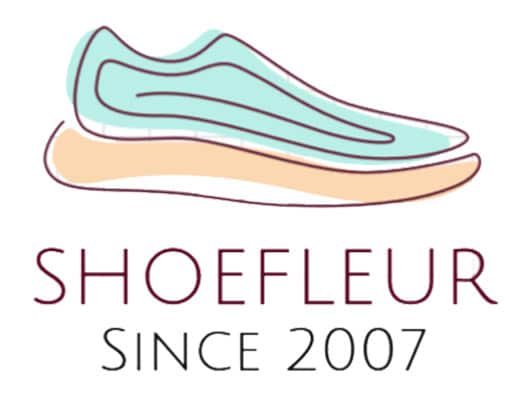
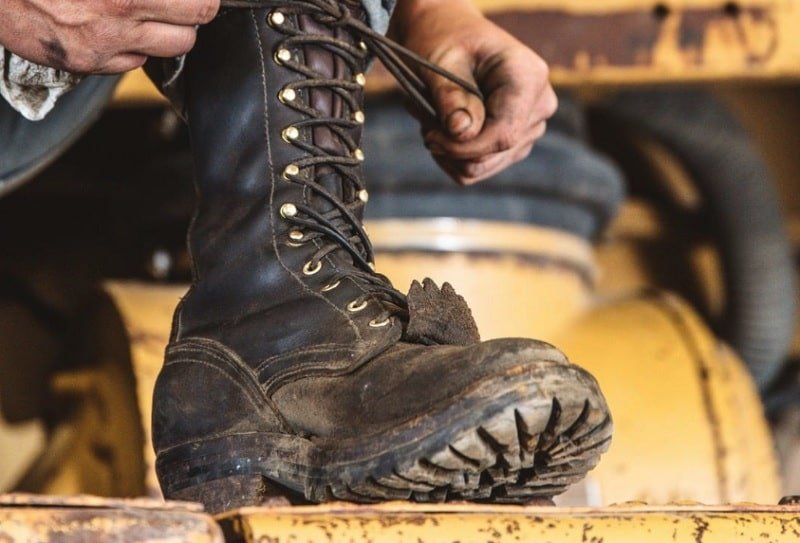

![10 Most Comfortable Clear Heels [year] 2 10 Most comfortable clear heels](https://shoefleur.com/wp-content/uploads/2023/06/Most-comfortable-clear-heels-150x150.jpg)
![20 Sole Types For Shoes and Boots You Need to Know [year] 3 Different Types of Soles for Shoes](https://shoefleur.com/wp-content/uploads/2022/07/Different-Types-of-Soles-for-Shoes-150x150.png)
![Best Beach Sandals & Flip-Flops For Women [year] 4 Best beach sandals for women](https://shoefleur.com/wp-content/uploads/2023/05/Best-beach-sandals-for-women-150x150.png)

![Asics Gel Venture 7 VS 8: Comparison [year] 6 Asics Gel Venture 7 VS 8](https://shoefleur.com/wp-content/uploads/2023/06/Asics-Gel-Venture-7-VS-82-150x150.png)
![The 7 Best Heels For Flat Feet: Heels Review [year] 7 best heels for flat feet](https://shoefleur.com/wp-content/uploads/2023/05/best-heels-for-flat-feet-150x150.webp)

![10 Best Heels For Wide Feet In [year] That Are Trendy And Classy 9 10 Best heels for wide feet](https://shoefleur.com/wp-content/uploads/2023/05/Best-heels-for-wide-feet-150x150.jpg)
![Best Heels For Plus Size Ladies in [year] 10 best heels for plus size ladies](https://shoefleur.com/wp-content/uploads/2023/05/best-heels-for-plus-size-ladies-150x150.jpg)
![10 Best Walking Shoes for Overweight Men in [year] 11 best walking shoes for overweight men](https://shoefleur.com/wp-content/uploads/2023/05/best-walking-shoes-for-overweight-men-150x150.jpg)




